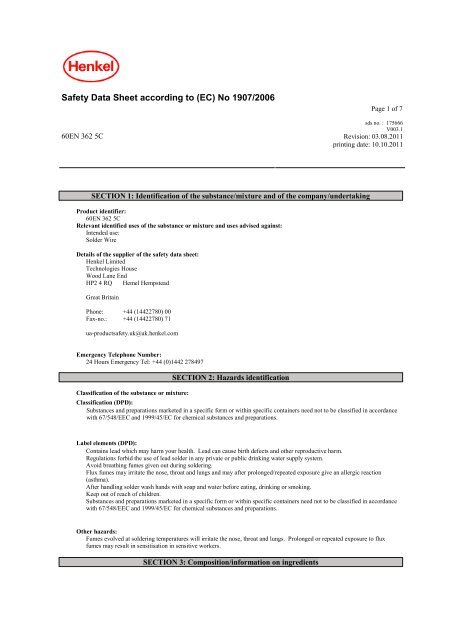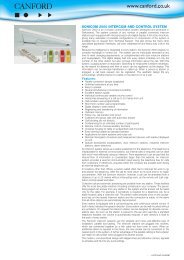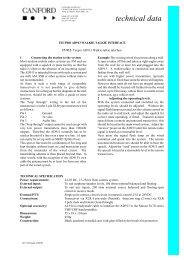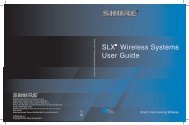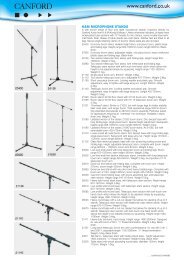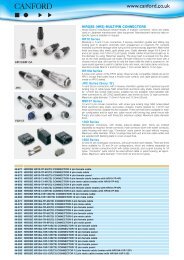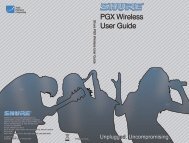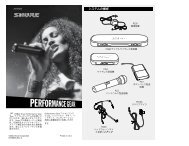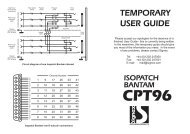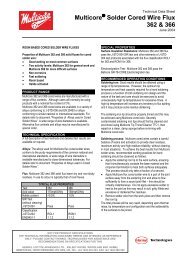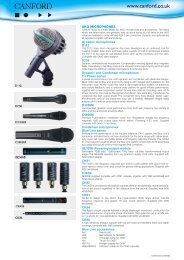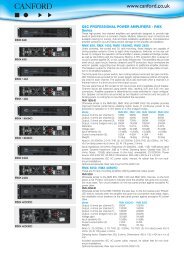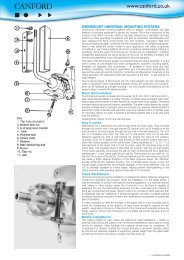60:40 Tin-Lead Alloy Solder MSDS Materaial Safety Data sheet
60:40 Tin-Lead Alloy Solder MSDS Materaial Safety Data sheet
60:40 Tin-Lead Alloy Solder MSDS Materaial Safety Data sheet
Create successful ePaper yourself
Turn your PDF publications into a flip-book with our unique Google optimized e-Paper software.
<strong>Safety</strong> <strong>Data</strong> Sheet according to (EC) No 1907/2006<strong>60</strong>EN 362 5CPage 1 of 7sds no. : 175666V003.1Revision: 03.08.2011printing date: 10.10.2011SECTION 1: Identification of the substance/mixture and of the company/undertakingProduct identifier:<strong>60</strong>EN 362 5CRelevant identified uses of the substance or mixture and uses advised against:Intended use:<strong>Solder</strong> WireDetails of the supplier of the safety data <strong>sheet</strong>:Henkel LimitedTechnologies HouseWood Lane EndHP2 4 RQ Hemel HempsteadGreat BritainPhone: +44 (14422780) 00Fax-no.: +44 (14422780) 71ua-productsafety.uk@uk.henkel.comEmergency Telephone Number:24 Hours Emergency Tel: +44 (0)1442 278497SECTION 2: Hazards identificationClassification of the substance or mixture:Classification (DPD):Substances and preparations marketed in a specific form or within specific containers need not to be classified in accordancewith 67/548/EEC and 1999/45/EC for chemical substances and preparations.Label elements (DPD):Contains lead which may harm your health. <strong>Lead</strong> can cause birth defects and other reproductive harm.Regulations forbid the use of lead solder in any private or public drinking water supply system.Avoid breathing fumes given out during soldering.Flux fumes may irritate the nose, throat and lungs and may after prolonged/repeated exposure give an allergic reaction(asthma).After handling solder wash hands with soap and water before eating, drinking or smoking.Keep out of reach of children.Substances and preparations marketed in a specific form or within specific containers need not to be classified in accordancewith 67/548/EEC and 1999/45/EC for chemical substances and preparations.Other hazards:Fumes evolved at soldering temperatures will irritate the nose, throat and lungs. Prolonged or repeated exposure to fluxfumes may result in sensitisation in sensitive workers.SECTION 3: Composition/information on ingredients
<strong>MSDS</strong>-No.: 175666V003.1<strong>60</strong>EN 362 5C Page 2 of 7Declaration of the ingredients according to CLP (EC) No 1272/2008:Hazardous componentsCAS-No.Rosin8050-09-7EC NumberREACH-Reg No.contentClassification232-475-7 1- 5 % Skin sensitizer 1H317Only dangerous ingredients for which a CLP classification is already available are displayed in this table.For full text of the H - statements and other abbreviations see section 16 "Other information".Substances without classification may have community workplace exposure limits available.Declaration of ingredients according to DPD (EC) No 1999/45:Hazardous componentsCAS-No.<strong>Tin</strong>74<strong>40</strong>-31-5<strong>Lead</strong>7439-92-1EC NumbercontentREACH-Reg No.231-141-8 50 - <strong>60</strong> %231-100-<strong>40</strong>1-2119513221-5930 - <strong>40</strong> %ClassificationRosin8050-09-7232-475-7 1 - 5 % R43For full text of the R-Phrases indicated by codes see section 16 'Other Information'.Substances without classification may have community workplace exposure limits available.Description of first aid measures:SECTION 4: First aid measuresInhalation:Move to fresh air. If symptoms persist, seek medical advice.Skin contact:Rinse with running water and soap.Obtain medical attention if irritation persists.Eye contact:Flush eyes with plenty of water for at least 5 minutes. If irritation persists seek medical attention.Ingestion:Do not induce vomiting.Seek medical advice.Most important symptoms and effects, both acute and delayed:No particular measures required.Indication of any immediate medical attention and special treatment needed:See section: Description of first aid measuresSECTION 5: Firefighting measuresCombustion behaviour:The product itself does not burn. Any fire extinguishing action should be appropriate to the surroundings.Extinguishing media:Suitable extinguishing media:Carbon dioxide, foam, powderExtinguishing media which must not be used for safety reasons:Do not use water on fires where molten metal is present.
<strong>MSDS</strong>-No.: 175666V003.1<strong>60</strong>EN 362 5C Page 3 of 7Special hazards arising from the substance or mixture:High temperatures may produce heavy metal dust, fumes or vapours.The flux medium will give rise to irritating fumes.Advice for firefighters:Wear self-contained breathing apparatus.SECTION 6: Accidental release measuresPersonal precautions, protective equipment and emergency procedures:Wear protective equipment.Environmental precautions:Do not empty into drains / surface water / ground water.Methods and material for containment and cleaning up:Scrape up spilled material and place in a closed container for disposal.Reference to other sections:See advice in chapter 8SECTION 7: Handling and storagePrecautions for safe handling:Extraction is necessary to remove fumes evolved during reflow.When using do not eat, drink or smoke.Wash hands before breaks and immediately after handling the product.See advice in chapter 8Hygiene measures:Good industrial hygiene practices should be observed.Wash hands before work breaks and after finishing work.Do not eat, drink or smoke while working.Conditions for safe storage, including any incompatibilities:Ensure good ventilation/extraction.Store in a cool, dry place.Specific end use(s):<strong>Solder</strong> Wire
<strong>MSDS</strong>-No.: 175666V003.1<strong>60</strong>EN 362 5C Page 4 of 7SECTION 8: Exposure controls/personal protectionControl parameters:Valid forGreat BritainIngredient ppm mg/m 3 Type Category RemarksTIN (INORGANIC COMPOUNDS AS SN)2 Time Weighted Average IndicativeECTLV74<strong>40</strong>-31-5(TWA):INORGANIC LEAD AND ITS0,15 Time Weighted AverageEU_OELCOMPOUNDS7439-92-1(TWA):LEAD AND ITS IONIC COMPOUNDS7439-92-1Biological Limit Value:EU_OEL_IILEAD AND LEAD COMPOUNDS,OTHER THAN LEAD ALKYLS (AS PB)7439-92-1ROSIN-BASED SOLDER FLUX FUME8050-09-7ROSIN-BASED SOLDER FLUX FUME8050-09-70,15 Time Weighted Average(TWA):0,05 Time Weighted Average(TWA):0,15 Short Term ExposureLimit (STEL):Colophony (Rosin) and derivatives: Rosin-based flux fume as total resin acids.Exposure controls:EH<strong>40</strong> WELEH<strong>40</strong> WELEH<strong>40</strong> WELEngineering controls:Extraction is necessary to remove fumes evolved during reflow.Where reasonably practicable this should be achieved by the use of local exhaust ventilation and good general extraction.Ensure good ventilation/extraction.Respiratory protection:In case of dust formation, we recommend wearing of appropriate respiratory protection equipment with particle filter P.This recommendation should be matched to local conditions.Ensure adequate ventilation.An approved mask or respirator fitted with an organic vapour cartridge should be worn if the product is used in a poorlyventilated areaFilter type: AHand protection:Please note that in practice the working life of chemical resistant gloves may be considerably reduced as a result of manyinfluencing factors (e.g. temperature). Suitable risk assessment should be carried out by the end user. If signs of wear andtear are noticed then the gloves should be replaced.The use of chemical resistant gloves such as Nitrile are recommended.Eye protection:<strong>Safety</strong> glasses with sideshields or chemical safety goggles should be worn if there is a risk of splashing.Skin protection:Wear suitable protective clothing.Information on basic physical and chemical properties:AppearancesolidSECTION 9: Physical and chemical propertiesOdorgreyNonepHInitial boiling pointFlash pointDecomposition temperatureVapour pressureDensity(20 °C (68 °F))not applicableNot determinednot applicableNo data available / Not applicableNo data available / Not applicable8,5 g/cm3
<strong>MSDS</strong>-No.: 175666V003.1<strong>60</strong>EN 362 5C Page 5 of 7Bulk densityViscosityViscosity (kinematic)Explosive propertiesSolubility (qualitative)Solidification temperatureMelting pointFlammabilityAuto-ignition temperatureExplosive limitsPartition coefficient: n-octanol/waterEvaporation rateVapor densityOxidising propertiesNo data available / Not applicableNo data available / Not applicableNo data available / Not applicableNo data available / Not applicableInsolubleNo data available / Not applicable183,0 - 188,0 °C (361.4 - 370.4 °F)No data available / Not applicableNo data available / Not applicableNo data available / Not applicableNot applicableNo data available / Not applicableNo data available / Not applicableNo data available / Not applicableOther information:No data available / Not applicableSECTION 10: Stability and reactivityReactivity:<strong>Solder</strong> alloy will react with concentrated nitric acid to produce toxic fumes of nitrogen oxides.Reacts with strong oxidants.Chemical stability:Stable under recommended storage conditions.Possibility of hazardous reactions:See section reactivityConditions to avoid:No decomposition if stored and applied as directed.Incompatible materials:None if used properly.Hazardous decomposition products:Thermal decomposition can lead to release of irritating gases and vapors.SECTION 11: Toxicological informationGeneral toxicological information:The preparation is classified based on the conventional method outlined in Article 6(1)(a) of Directive 1999/45/EC. Relevantavailable health/ecological information for the substances listed under Section 3 is provided in the following.Oral toxicity:Harmful if swallowed.Inhalative toxicity:Fumes evolved at soldering temperatures will irritate the nose, throat and lungs. Prolonged or repeated exposure to fluxfumes may result in sensitisation in sensitive workers.Dermal toxicity:May cause sensitization by skin contact.Skin irritation:Fumes emitted during soldering may irritate the skin.Eye irritation:Fumes emitted during soldering may irritate the eyes.Other remarks:Chronic overexposure to lead may result in damage to the blood forming, nervous, urinary and reproductive systems. Severelead toxicity will cause sterility, abortion and neonatal mortality and morbidity.
<strong>MSDS</strong>-No.: 175666V003.1<strong>60</strong>EN 362 5C Page 6 of 7SECTION 12: Ecological informationGeneral ecological information:The preparation is classified based on the conventional method outlined in Article 6(1)(a) of Directive 1999/45/EC. Relevantavailable health/ecological information for the substances listed under Section 3 is provided in the following.Ecotoxicity:May cause long-term adverse effects in the aquatic environment.Mobility:The product is insoluble and sinks in water.Bioaccumulative potential:Octanol/Water distribution coefficient:Not applicableToxicity:Hazardous componentsCAS-No.Rosin8050-09-7Rosin8050-09-7Rosin8050-09-7ValuetypeValueAcuteToxicityStudyExposuretimeSpeciesMethodLC50 > 1.000 mg/l Fish 96 h Pimephales promelas OECD Guideline203 (Fish, AcuteToxicity Test)EC50 911 mg/l Daphnia 48 h Daphnia magna OECD Guideline202 (Daphnia sp.AcuteImmobilisationTest)EC50 > 100 mg/l Algae 72 h Scenedesmus subspicatus (newname: Desmodesmussubspicatus)Persistence and degradability:Hazardous componentsCAS-No.Rosin8050-09-7ResultRoute ofapplicationDegradability Methodaerobic 36 - 46 % OECD Guideline 301 F (ReadyBiodegradability: ManometricRespirometry Test)SECTION 13: Disposal considerationsWaste treatment methods:Product disposal:Wherever possible unwanted solder alloy should be recycled for recovery of metal.Otherwise dispose of in accordance with local and national regulations.Disposal of uncleaned packages:Dispose of as unused product.Waste code16 03 03 - inorganic wastes containing dangerous substancesSECTION 14: Transport informationGeneral information:Not hazardous according to RID, ADR, ADNR, IMDG, IATA-DGR.SECTION 15: Regulatory information<strong>Safety</strong>, health and environmental regulations/legislation specific for the substance or mixture:VOC content < 1 %
<strong>MSDS</strong>-No.: 175666V003.1<strong>60</strong>EN 362 5C Page 7 of 7National regulations/information (Great Britain):Remarks The Health & <strong>Safety</strong> at Work Act 1974.The Control of <strong>Lead</strong> at Work Regulations. L132:Control of <strong>Lead</strong> at Work:Approved Code of Practice and Guidance.The Control of Substances Hazardous to Health Regulations. L5:GeneralApproved Code of Practice to the COSHH Regulations. HS(G)97:A Step by StepGuide to the COSHH Regulations. HS(G)193:COSHH essentials: Easy steps tocontrol chemicals.IND (G)248L:<strong>Solder</strong> fume and you. IND(G)249L:Controlling health risks fromrosin (colophony) based solder fluxes.Employees should be under medical surveillance if the risk assessment madeunder the Control of <strong>Lead</strong> at Work Regulations indicates they are likely to beexposed to significant concentrations of lead, or if an Employment MedicalAdvisor or appointed doctor so certifies.A woman employed on work which exposes her to lead should notify heremployer as soon as possible if she becomes pregnant. The Employment MedicalAdvisor / Appointed Doctor should be informed of the pregnancy.Under the Management of Health and <strong>Safety</strong> at Work Regulations, employers arerequired to assess the particular risks to health at work of pregnant workers andworkers who have recently given birth or who are breast feeding.SECTION 16: Other informationThe labelling of the product is indicated in Section 2. The full textof all abbreviations indicated by codes in this safety data <strong>sheet</strong> are as follows:R43 May cause sensitisation by skin contact.H317 May cause an allergic skin reaction.Further information:This information is based on our current level of knowledge and relates to the product in the state in which it is delivered. It isintended to describe our products from the point of view of safety requirements and is not intended to guarantee anyparticular properties.This safety data <strong>sheet</strong> was prepared in accordance with Council Directive 67/548/EEC and it's subsequent amendments, andCommission Directive 1999/45/EC.Substances and preparations marketed in a specific form or within specific containers need not to be classified in accordancewith 67/548/EEC and 1999/45/EC for chemical substances and preparations.


